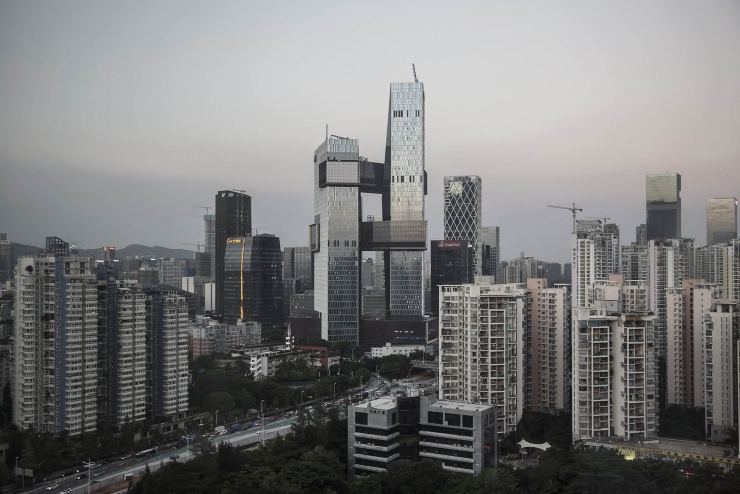
Tencent's new headquarters is located in Shenzhen's software industry base. Friends in Shenzhen should be familiar with it. It costs nearly 600 million U.S. dollars and is expected to be completed next year. According to Bloomberg News, Tencent’s headquarters will also be a laboratory for its Internet service and IoT equipment.
The headquarters of Tencent is composed of two buildings with a connecting bridge in the middle. The architectural design comes from NBBJ, a construction company that once served Amazon, Google, Samsung and Ali.
According to Bloomberg's report, the connecting area is also not decorated. There are tea rooms, auditoriums, conference rooms, exhibition halls, and even a 300-meter runway. In addition, there is a roof garden, a swimming pool, a climbing center, and several restaurants and meditation rooms.
The place where this is a technology company headquarters is that there will be a holographic guide in the room, the meeting room will adjust the temperature according to the attendance, and the parking lot will automatically remind the best parking spot.
The badges or signs worn by employees can locate each person's position in the building and be accurate to the room; there will also be a face recognition system at the gate; the parking guidance can be obtained through WeChat, and the floors to be visited can be selected in the elevator.
With billions of products such as WeChat and QQ, Tencent's servers are a big investment. At headquarters, the server's thermal energy is recycled and used to provide hot water for the pool, kitchen and bathroom. Ventilation systems use indoor air to synthesize external air flow and save energy. Real-time data feedback can also help monitor hydropower usage. It is said that it will save 6.85 million yuan each year.
Tencent is using the headquarters as its own experimental platform for the IoT platform, just as Tencent general manager and chief architect Ivan Wan (English name) stated in the article, "Headquarters is the next large-scale testing ground for smart devices." This strategy can also help test whether a product is suitable for marketing.
The design of the headquarters has also been personally influenced by Ma Huateng. He is allegedly often involved in the design process, and the ergonomic office chairs used by his employees in the future are personally selected by him.
The article also mentioned Tencent's corporate culture, pointing out that although Ma Huateng is very low-key, but in the exchanges with subordinates, can always put forward sharp questions, which also created Tencent's "PK culture." Wan said, “You don’t know where the problem will come from, so you have to think about it before talking to him. It also keeps the staff growing.†In the design of the headquarters, the questions raised by Ma are mainly related to environmental protection.
Tencent’s headquarters experience can provide standards for other buildings, including new buildings in Guangzhou, Beijing, and Chengdu, as well as other companies. After the attractions of Shenzhen is not to add a Tencent headquarters.
The Schottky Diode is another type of semiconductor diode which can be used in a variety of wave shaping, switching and rectification applications the same as any other junction diode. The main adavantage is that the forward voltage drop of a Schottky Diode is substantially less than the 0.7 volts of the conventional silicon pn-junction diode.
Schottky diodes have many useful applications from rectification, signal conditioning and switching, through to TTL and CMOS logic gates due mainly to their low power and fast switching speeds.
the Schottky Diode also known as a Schottky Barrier Diode is a solid-state semiconductor diode in which a metal electrode and an n-type semiconductor form the diodes ms-junction giving it two major advantages over traditional pn-junction diodes, a faster switching speed, and a low forward bias voltage.
The metal–to-semiconductor or ms-junction provides a much lower knee voltage of typically 0.3 to 0.4 volts compared against a value of 0.6 to 0.9 volts seen in a standard silicon base pn-junction diode for the same value of forward current.
Variations in the metal and semiconductor materials used for their construction means that silicon carbide (SiC) Schottky diodes are able to turn [ON" with with a forward voltage drop as little as 0.2 volts with the Schottky diode replacing the less used germanium diode in many applications requiring a low knee voltage.
Schottky Diode,Schottky barrier diode,schottky rectifiers, Barrier Schottky,SiC Schottky Rectifier,diodes inc
Changzhou Changyuan Electronic Co., Ltd. , https://www.cydiode.com